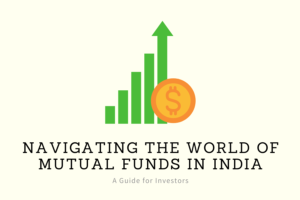The Lifecycle of Mutual Funds: From Inception to Maturity

Beginners in the investment community are often advised to start their journey by investing in mutual funds as they are managed by professionals, and they allow investing in assets that require a huge capital, which is otherwise not possible.
Mutual funds are funds that allow several investors to invest their money together in buying financial instruments like equity, bonds, gold, government securities, etc. Mutual funds allow investors to gain returns and reduce the risk involved in investing in a single instrument, asset, or script., thus helping in diversification. One can invest in mutual funds either through the SIP route or the lump sum way.
Let us have a look at the lifecycle of mutual funds to understand it better.
Stage 1: Inception and Fund Creation
The first stage of every mutual fund is its creation. A mutual fund is conceived or created when the asset management company designs the fund with certain investment objectives. They call for subscriptions from potential investors who are interested in investing in such securities. It is also called a New Fund Offer (NFO), which is available only for a specific time for subscription.
Stage 2: Capital Accumulation and Investment Strategy
Once the fund is open for subscription, investors will start putting their money, and this forms the capital of the fund. Investors can also contribute in smaller amounts, allowing them to invest in a wide portfolio of securities.
A professional portfolio manager then invests the money in different assets like shares, bonds, commodities, etc., as per the fund’s strategy and objective, which is decided after in-depth research and analysis to maximise investor returns.
Stage 3: Growth and Performance Monitoring
Achieving the desired growth of the fund is the most crucial factor as it directly affects the fund’s Net Asset Value (NAV) and, ultimately, investor’s returns. Once the investor’s money has been invested, the fund manager tracks the growth and performance of the mutual fund against the set benchmarks and compares it with other competitors in the market.
When growth is achieved and returns are earned, they are either distributed or invested back, depending on the type of fund. Investors can calculate SIP returns using the SIP calculator. Similarly, lump sum investments can also be tracked.
If a mutual fund has invested in stocks and the value of the stocks increases, the NAV of the mutual fund will also increase. If a security does not perform well, the fund manager may replace it with another well-performing asset (depending on the fund type and objective) to maximise the returns for the investors.
Stage 4: Maturity and Potential Liquidation
At any stage, the investors can choose to redeem or sell their units (for open-ended equity mutual funds) at the existing NAV. This makes mutual funds a highly liquid investment instrument. It is important to remember that some mutual funds may charge an exit load in case an investor withdraws before a specified time, or some may have a lock-in period.
Conclusion: The Importance of Understanding a Fund’s Lifecycle
An understanding of a mutual fund’s life cycle is important if you are keen on investing in mutual funds. Knowing the different stages of its life cycle helps you to understand what happens at each stage and how the securities are managed to increase the returns. It also gives investors clarity, allowing them to make an informed decision.






